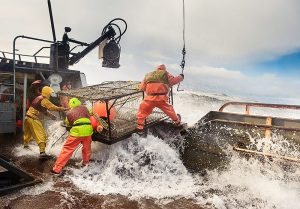Meeting Fishing Vessel Safety Act Requirements: 2025-2026 Compliance Guide
 Commercial fishing remains one of America’s most dangerous occupations, with fatality rates significantly higher than most other industries. The Commercial Fishing Industry Vessel Safety Act, enacted following tragic losses at sea, establishes minimum safety requirements that can mean the difference between life and death. Here is a comprehensive guide for mariners to ensure compliance for 2025-2026.
Commercial fishing remains one of America’s most dangerous occupations, with fatality rates significantly higher than most other industries. The Commercial Fishing Industry Vessel Safety Act, enacted following tragic losses at sea, establishes minimum safety requirements that can mean the difference between life and death. Here is a comprehensive guide for mariners to ensure compliance for 2025-2026.
Determine Your Vessel’s Classification
Establish which regulations apply to your operation. The Fishing Vessel Safety Act applies to commercial fishing vessels, with different requirements based on vessel size, operation area, and crew capacity. Documented vessels operating beyond the U.S. Boundary Line (the dividing point between internal and offshore waters) or carrying more than 16 persons face the most rigorous requirements, while smaller operations have modified standards. Check your vessel’s documentation and operating parameters against current U.S. Coast Guard classifications. This determines everything from equipment requirements to training obligations.
Establish Monthly Safety Training Programs
The master or individual in charge must ensure that basic safety drills and instructions are given to each crewman at least once each month. These aren’t optional, they are mandatory and must simulate actual emergency conditions. Your monthly training program must cover seven critical scenarios: abandoning vessel, firefighting, man overboard recovery, flood response, survival craft launching, immersion suit donning, and emergency communications. Document each training session with participant names, dates, and scenarios covered.
Secure Certified Drill Conductor Training
No individual may conduct drills or provide safety instructions unless properly trained. At least one crew member must complete U.S. Coast Guard approved Drill Conductor Training through organizations like the Alaska Maritime Safety Education Association (AMSEA). Drill Conductor certification programs are typically 16-24 hours and include firsthand practice with safety equipment.
Install Required Safety Equipment
Equip your vessel with mandatory safety gear including emergency power sources located outside the main machinery space capable of supplying connected loads for at least three hours. Install appropriate survival craft, immersion suits, life rafts, EPIRBs, and fire suppression systems based on your vessel’s classification. Regular maintenance and inspection of this equipment is not simply the best practice, it is required.
Conduct Stability Assessments
The Act requires basic stability requirements and testing for commercial fishing vessels. When making substantial vessel alterations, adding new equipment, or swapping out old equipment, new stability calculations must be performed and a new stability report must be issued. Stability instructions must be clear and understandable for vessel operators, accounting for different operating conditions. Pay special attention to free surface effects in tanks and structural icing impacts on stability. Document all calculations and keep stability instructions readily available to the operating crew.
Implement New Crew Orientation and Training
The master must ensure safety training is provided for each individual aboard the vessel. This orientation must explain emergency instructions and cover all required drill scenarios. Create a standardized orientation checklist covering vessel specific safety procedures, emergency equipment locations, and individual crew responsibilities during emergencies. Document completion for each new crew member.
Establish Casualty Reporting Procedures
U.S. Coast Guard Form 2692 must be filed for injuries requiring professional medical treatment or cases involving loss of life. The form requires detailed accident descriptions and prevention recommendations. Train your crew on when and how to report incidents. Many fishing operations fail to properly report injuries, which can create legal issues for vessel owners and can damage the industry.
Create Documentation Systems
Maintain comprehensive records of all training activities, equipment inspections, stability calculations, and incident reports. U.S. Coast Guard inspections may request documentation proving compliance with safety requirements. Establish regular review schedules for all safety protocols and equipment. Use digital tools or logbooks to track training dates, equipment maintenance, and crew certifications.
Build a Culture of Safety
Meeting minimum requirements is just the first step. Consider additional training such as first aid certification and advanced firefighting. Insurance companies raise rates for vessels with repeat claims, making comprehensive safety programs financially beneficial.
The most successful fishing operations treat safety as a competitive advantage which reduces insurance costs, attracts highly skilled crew members, and builds a reputation of excellence.
Safety regulations continue evolving based on industry incidents and technological advances. Stay current with U.S. Coast Guard updates, industry associations, and certified training providers to ensure ongoing compliance. These requirements exist because they save lives. Time spent on proper training and equipment maintenance can prevent tragedies. Your crew’s safety is worth far more than the cost of compliance.
 Maritime Injury Law Blog
Maritime Injury Law Blog

